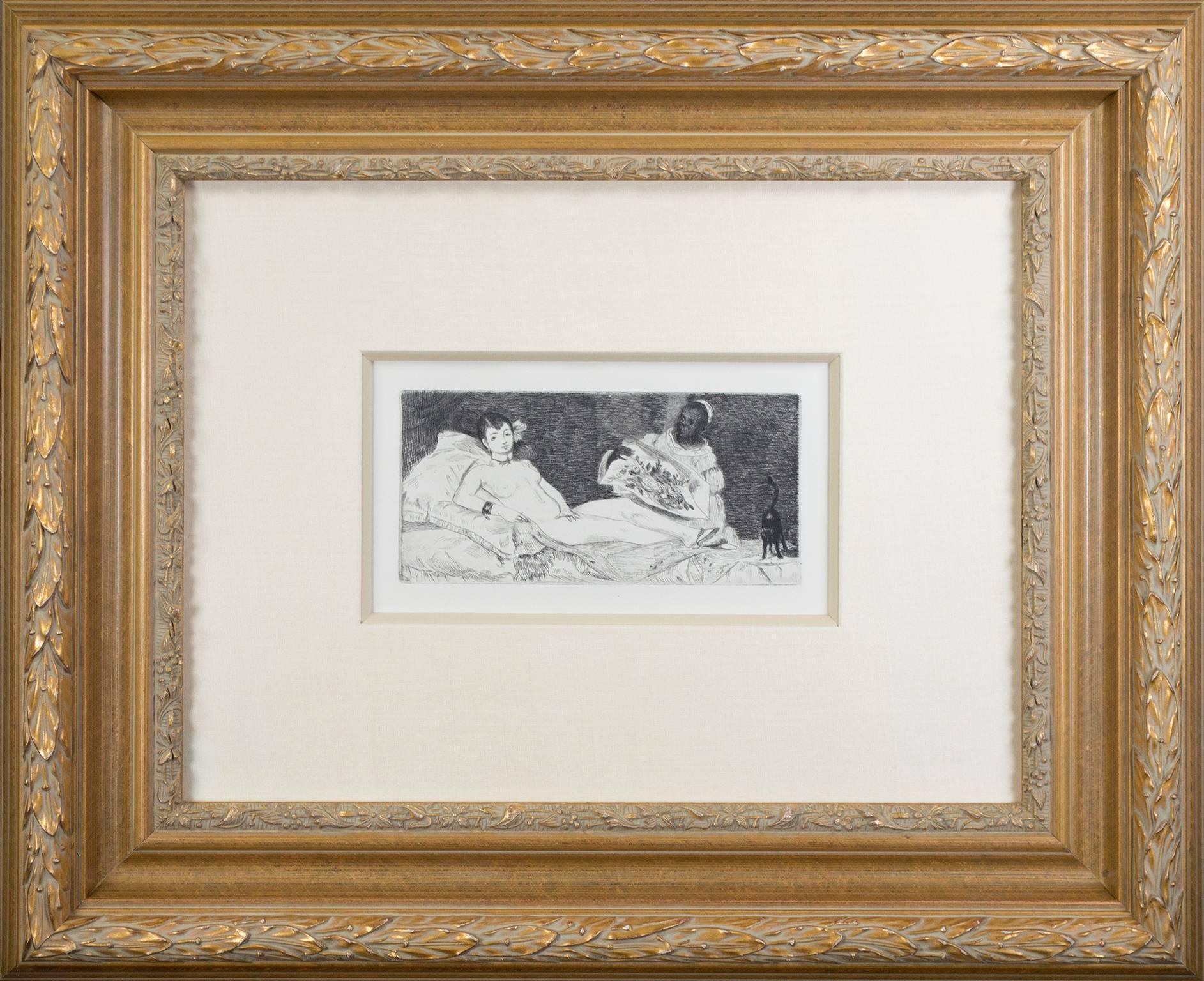

According to Maria Rutledge, "references to Blackness thus invaded the image of white Olympia, turning her into the caricatural and grotesque animal that Black people are frequently made to represent in the nineteenth century." In some cases, the white prostitute in the painting was described using racially charged language. Clark recounts of a friend's disbelief in the revised 1990 version of The Painting of Modern Life: "you've written about the white woman on the bed for fifty pages and more, and hardly mentioned the black woman alongside her." Olympia was created 15 years after slavery had been abolished in France and its empire, but negative stereotypes of black people persisted among some elements of French society. Édouard Manet asked himself why lie, why not tell the truth he introduced us to Olympia, this fille of our time, whom you meet on the sidewalks." Olympia's maid Īlthough originally overlooked, the figure of the maid in the painting, modelled by a woman named Laure, has become a topic of discussion among contemporary scholars. He paid tribute to Manet's honesty, however: "When our artists give us Venuses, they correct nature, they lie. Even Émile Zola was reduced to disingenuously commenting on the work's formal qualities rather than acknowledging the subject matter, "You wanted a nude, and you chose Olympia, the first that came along". Journalist Antonin Proust later recalled, "If the canvas of the Olympia was not destroyed, it is only because of the precautions that were taken by the administration." The critics and the public condemned the work alike. Conservatives condemned the work as "immoral" and "vulgar". Though Manet's The Luncheon on the Grass ( Le déjeuner sur l'herbe) sparked controversy in 1863, his Olympia stirred an even bigger uproar when it was first exhibited at the 1865 Paris Salon. A well known woman currently living in modern-day Paris could not simultaneously represent a historical or mythological woman. The familiarity with the identity of the model was a major reason this painting was considered shocking to viewers. Some of her paintings were exhibited in the Paris Salon. She started modeling when she was sixteen years old and she also was an accomplished painter in her own right. The model for Olympia, Victorine Meurent, would have been recognized by viewers of the painting because she was well known in Paris circles. Charles Baudelaire thought thinness was more indecent than fatness. Finally, Olympia is fairly thin by the artistic standards of the time. Most paintings that were this size depicted historical or mythological events, so the size of the work, among other factors, caused surprise.

The canvas alone is 130.5 × 190 cm (51.4 × 74.8 inches), which is rather large for this genre-style painting. Unlike the smooth idealized nude of Alexandre Cabanel's La naissance de Vénus, also painted in 1863, Olympia is a real woman whose nakedness is emphasized by the harsh lighting.

The painting deviates from the academic canon in its style, characterized by broad, quick brushstrokes, studio lighting that eliminates mid-tones, large color surfaces and shallow depth. Some have suggested that she is looking in the direction of the door, as her client barges in unannounced. Olympia disdainfully ignores the flowers presented to her by her servant, probably a gift from a client. The aroused posture of the cat was provocative in French, chatte (cat) is slang for female genitalia. Manet replaced the little dog (symbol of fidelity) in Titian's painting with a black cat, a creature associated with nocturnal promiscuity. Whereas the left hand of Titian's Venus is curled and appears to entice, Olympia's left hand appears to block, which has been interpreted as symbolic of her role as a prostitute, granting or restricting access to her body in return for payment. The painting is modelled after Titian's Venus of Urbino (c. "Olympia" was a name associated with prostitutes in 1860s Paris. The black ribbon around her neck, in stark contrast with her pale flesh, and her cast-off slipper underline the voluptuous atmosphere. These include the orchid in her hair, her bracelet, pearl earrings and the oriental shawl on which she lies, symbols of wealth and sensuality. What shocked contemporary audiences was not Olympia's nudity, nor the presence of her fully clothed maid, but her confrontational gaze and a number of details identifying her as a demi-mondaine or prostitute. 2.1.1 Confrontational gaze and oppositional gaze.


 0 kommentar(er)
0 kommentar(er)
